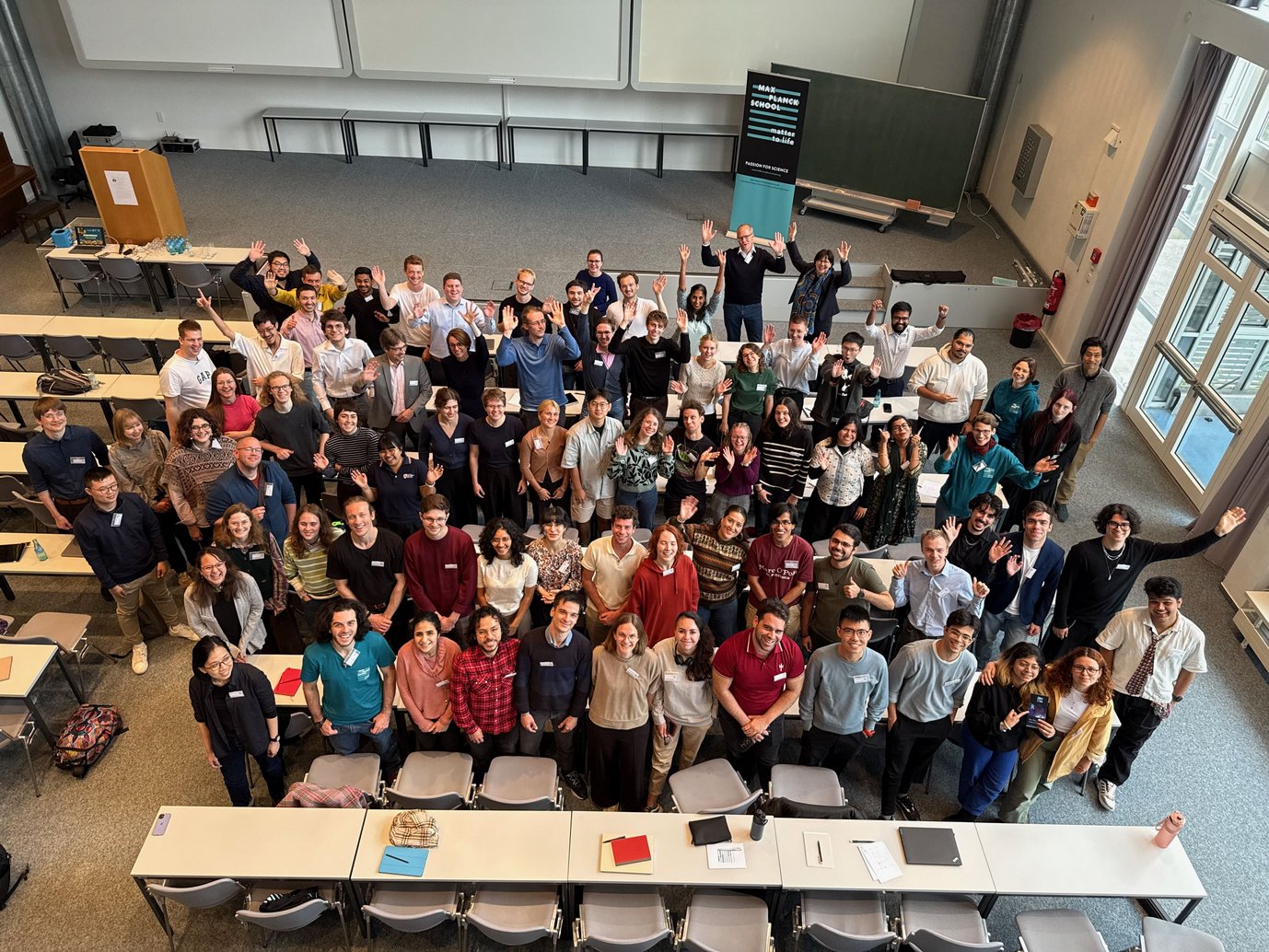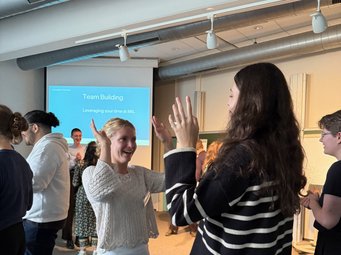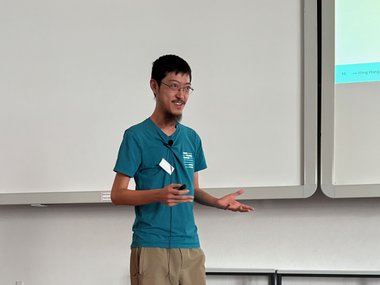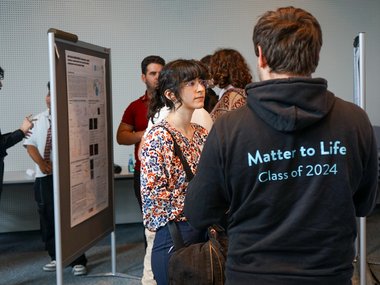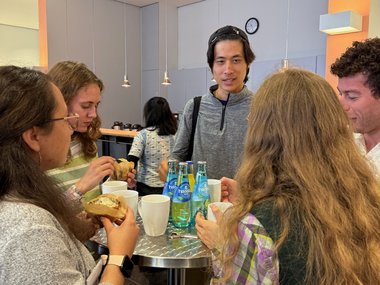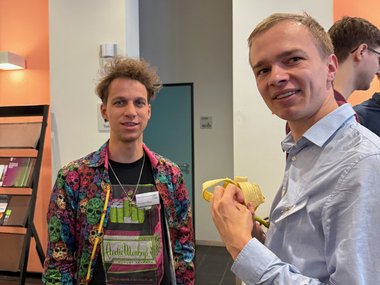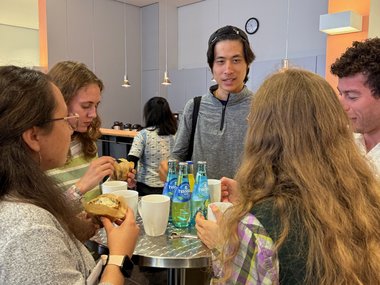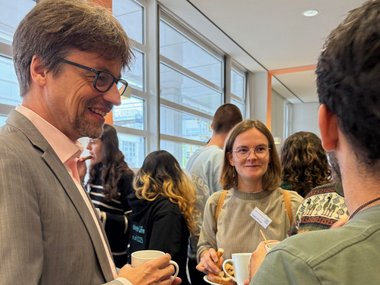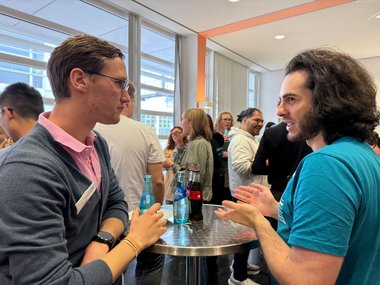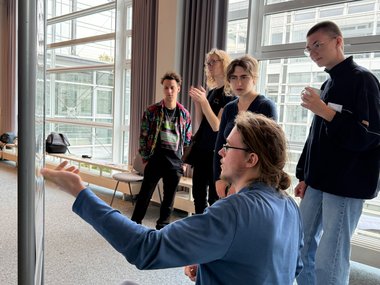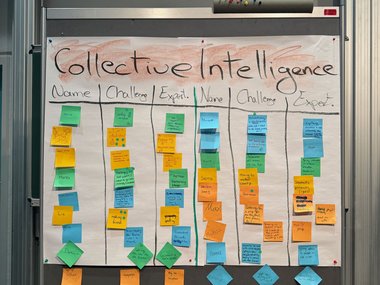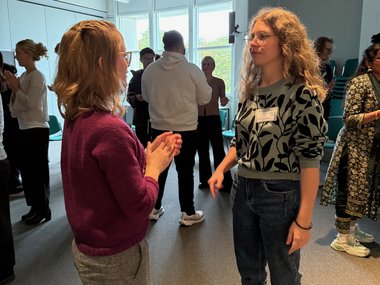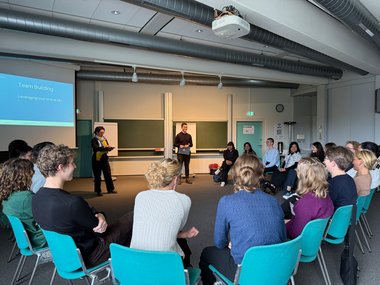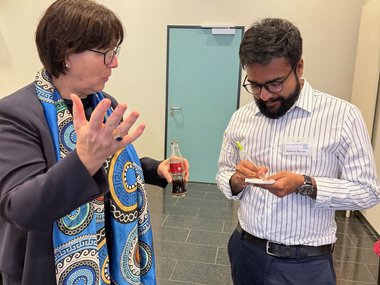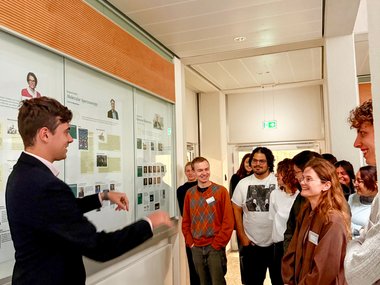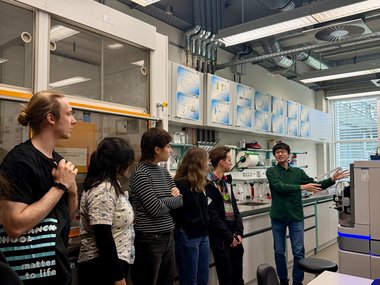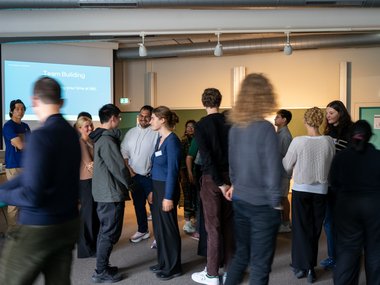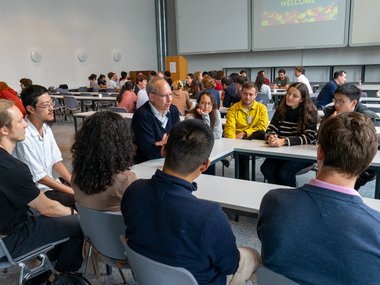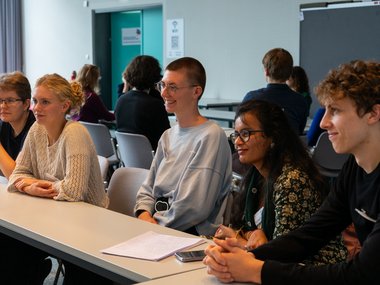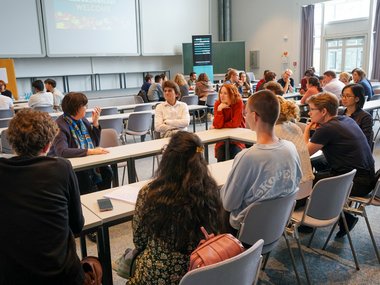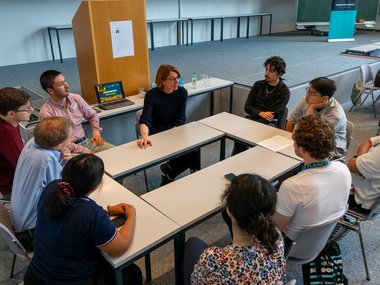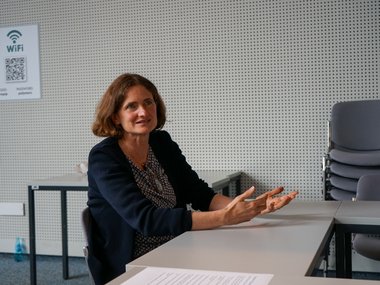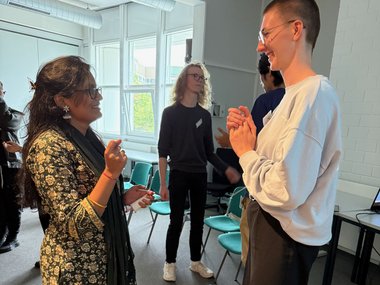A Chemist, a Biologist, and a Physicist Walk into a Symposium…
This is not the beginning of a joke, but rather the beginning of every MtL Day—and the MtL Fall Day 2025 in Mainz was no exception. Students from diverse backgrounds and Fellows from various disciplines convened as knowledge was shared, exchanged, absorbed, and amplified. Hosted by the Max Planck Institute for Polymer Research, the Staudinger Hall—named after Nobel Prize-winning organic chemist Hermann Staudinger—served as a poignant reminder of the caliber of science surrounding us.
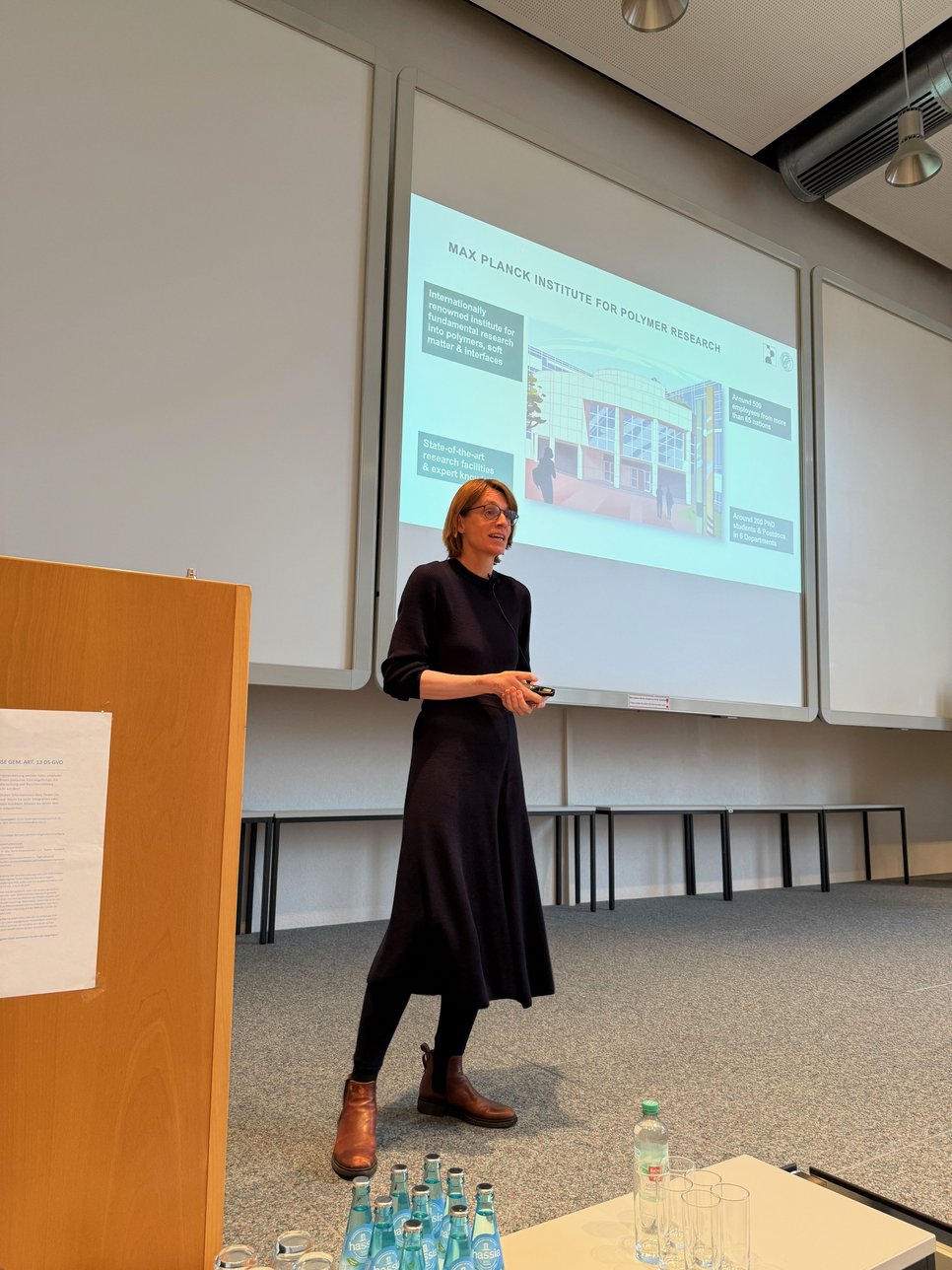
A warm welcome and introduction to both the science and the city by the director, Frauke Gräter, set the stage for an exciting and stimulating symposium. The first day featured presentations from MtL Fellows spanning the breadth of our research field. Several talks explored fundamental aspects of biological systems: Katharina Landfester discussed compartmentalization and functional modules in synthetic cells, while Ulrich Schwarz examined the role of temperature in biological processes. Frauke Gräter investigated the protective mechanisms that prevent collagen fibers from aging, and Karin Jacobs analyzed the physical basis of bacterial adhesive properties. Thorsten Moos complemented these scientific presentations with a thoughtful discourse on the evolving role of ethics in our field.
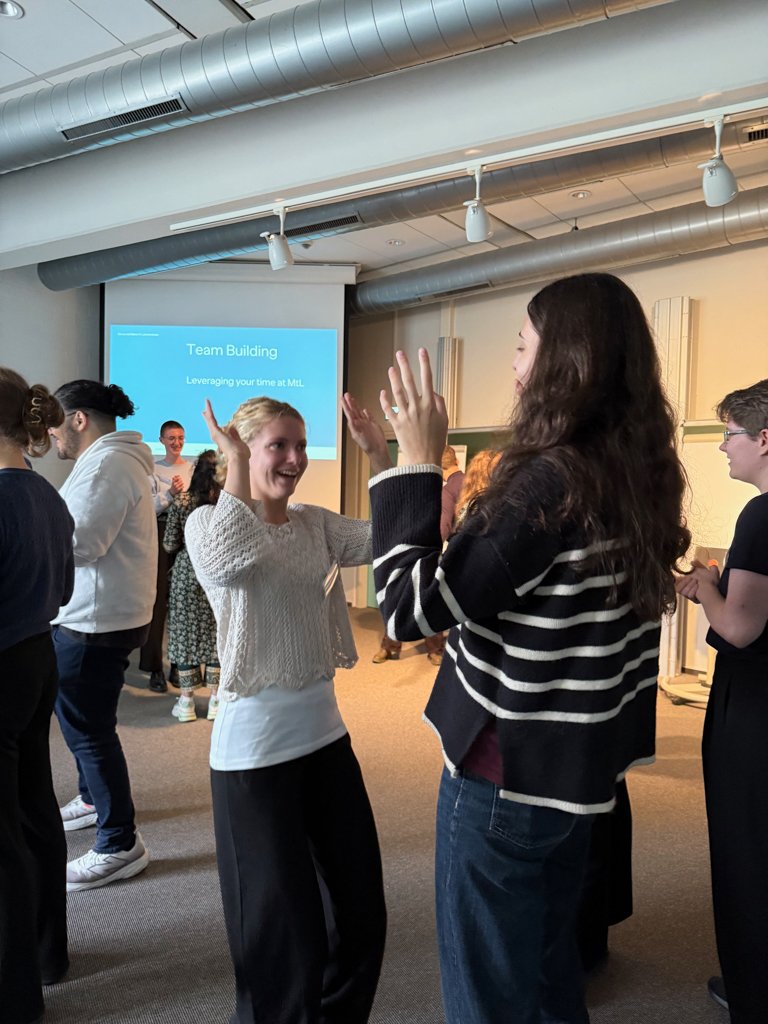
Following the lunch break, students participated in a career roundtable session with the Fellows. The Fellows shared insights into their career trajectories, both inspiring students and providing valuable clarity regarding potential career paths. The day concluded with an extended poster session featuring more than 20 posters from our PhD candidates. All second-year Master's students presented work completed during their lab rotations and/or Master's theses to peers and Fellows. In parallel, newly enrolled students who had joined the program at the beginning of the month participated in a team-building exercise to strengthen cohort, and the networking potential beyond.
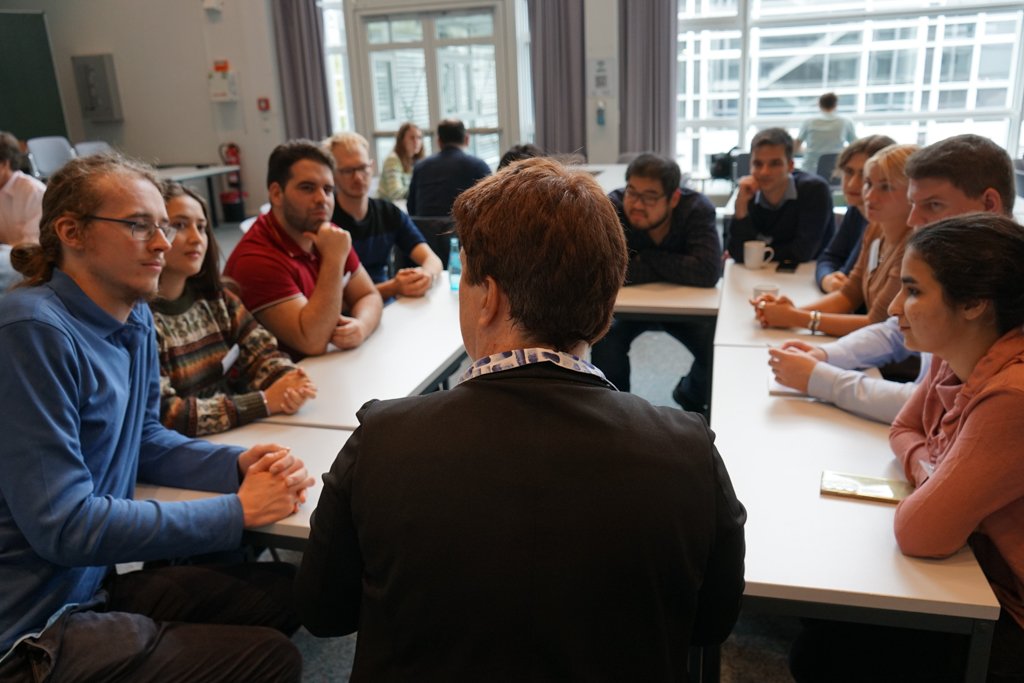
The second day featured student presentations on topics ranging from enzyme and protein engineering to protocell evolution and promiscuous catalysis—a true reflection of the interdisciplinary research conducted within the MtL network. Between the student talks Tanja Weil gave an impressive presentation on how higher-order synthetic assembly of fibrils can be modulated and precisely controlled, broadening perspectives on how structure formation impacts living systems. Students also had the opportunity to visit Fellows' laboratories at MPI-PR, gaining deeper insights into ongoing research: the construction of giant unilamellar vesicles (GUVs) using microfluidics in Katharina Landfester's group; applications of molecular dynamics and simulations in nanomaterials and mechanobiology in Frauke Gräter's laboratory; and confocal microscopy and cell culture facilities in Tanja Weil's group.The symposium concluded with a keynote lecture by Andreas Walther. It can be simply summarized by his statement at the beginning "What is Life? A Chemical Reaction Network." As part of his talk he introduced us to autonomous and adaptive dynamic materials that could potentially be developed into dynamic devices fueled by self-regulating chemistry.
Given the geographically dispersed structure of the MtL Network and Program, these events are crucial for maintaining network cohesion and vitality. We hope the new students gained an appreciation for the breadth of research conducted by our Fellows and students, and feel inspired as they embark on their academic and scientific journeys with us. For the rest, ultimately, we hope the physicist left with a deeper appreciation for chemistry and biology, and vice versa. Knowledge should never be static, and our commitment to continuous learning across disciplines is what shapes and enriches our research.
